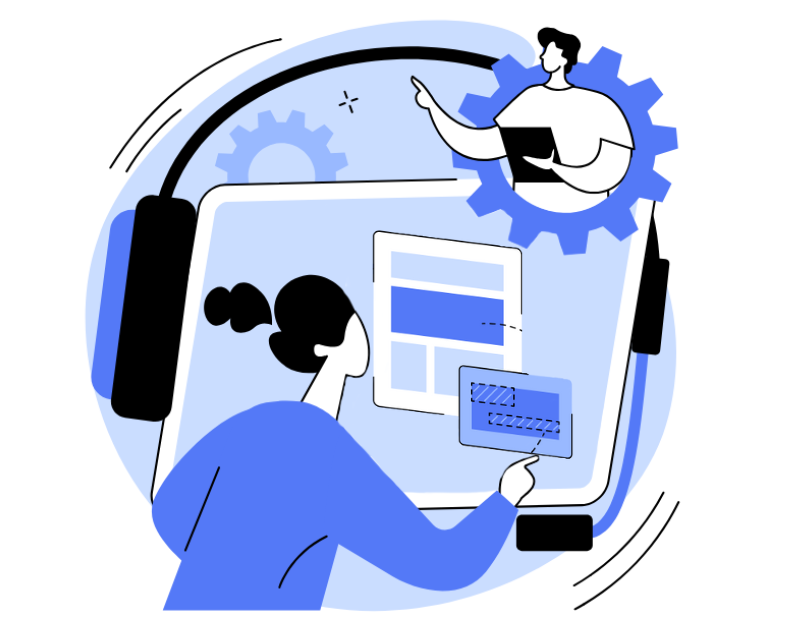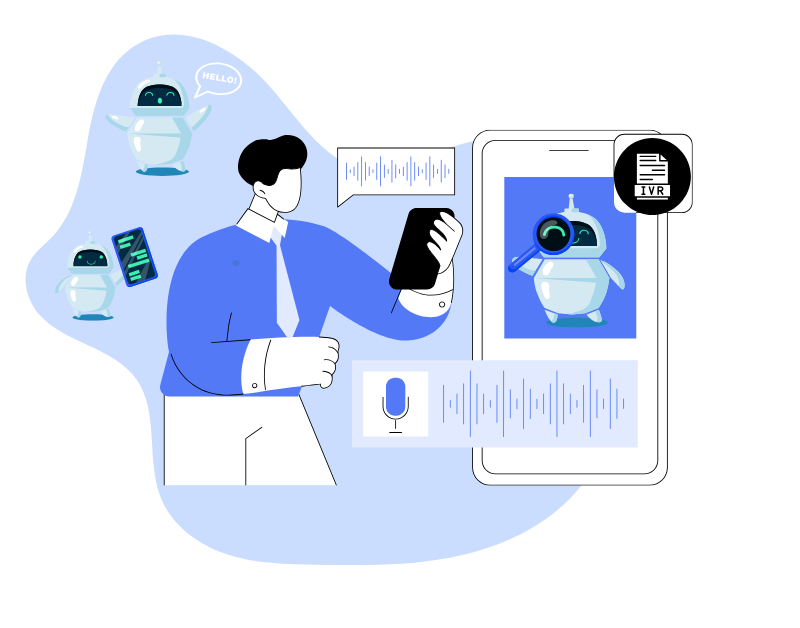“Let robots work, not people!” Indeed, why pay humans if at least part of their work can be done by Automated Speech Recognition (ASR) and Text-to-Speech (TTS) systems? You can’t deny the song of progress, but in real life, when replacing call center agents with voice robots, there are important nuances related to its own cost. Read on below for details. This material is related to the product Voice Robot.
Do you need a Voice Robot? An illustrative calculation
First, let’s conduct a theoretical experiment in the spirit of a chessboard. The premise is:
- There’s a contact center that provides an information line without sales.
- The call first goes to an interactive voice menu and, if it doesn’t end there, it is transferred to the waiting queue for agents.
- There is no 8-800 traffic.
- All calls are of the same length, with no post-call processing required.
- FCR=100%, all customers get the right answers at the first attempt and don’t call back (in reality, of course, this doesn’t happen, but our experiment is theoretical)
Schematic:
The company’s management is planning to replace some of the call center agents with a smart robot that recognizes speech through the SaaS scheme. It should look like this:
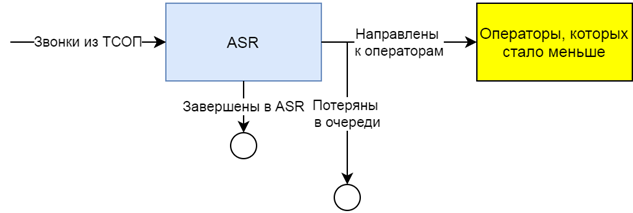
h3>General Description of Savings/h3>
The description of savings at first glance looks as simple as a cucumber (for simplicity we do not separately highlight installation and operational costs for IVR and ASR):

If the left side of the inequality is greater than the right, then it’s profitable. Profit, winning over the hearts of millions. That’s exactly what SIP-providers offer. But the devil, as usual, is in the details. Let’s take any arbitrary period of time (numbers are conditional):
Load on the IVR, hours of traffic – 1.000 (we know that scientifically the load is measured in special units – Erlangs, abbreviated Erl, but for clarity, we will use hours).
Load on the agents before the system upgrade, hours – 3.000.
Let’s set “IVR expenses” =0. We’ll assume that the system has long been in the company – fully amortized, and its maintenance costs are negligible. Then from an economic point of view, only the gains compared to agent expenses BEFORE the implementation of ASR will be of interest.
Assume that 1 hour of agent-handled traffic costs 300 rubles.
Expenses before the upgrade will be 3.000×300=900.000 rubles.
Let’s assume that after the upgrade only 300 hours of traffic will reach the agents, the remaining 2.700 will be handled by the robot:
![]()
h3>For SaaS systems /h3>
For SaaS systems, as in the case at hand, in 99% of cases, SIP-providers apply a tariff model either for minutes or for requests to the platform. This roughly equates to the same thing, as each request takes some time. If an hour of processed ASR traffic is cheaper than an hour of an agent’s time, then the inequality, it seems, is true, and all is well. But, the problem is that it’s unknown in advance how long the automated dialogues with subscribers will actually last. There’s no certainty in whether those 2,700 hours might turn into 4,500 or 10,000 hours, which would overshadow the anticipated cost benefit.
Here is an example:
The cost of processing an hour of ASR traffic – .67 per hour.
The system talks to subscribers longer than a live agent, by 1.5 times.
![]()
The borderline situation, the benefit is lost:

Of course, it’s not always going to be like this, we’re slightly exaggerating, but the point is this element needs to be taken into account. The SIP-provider of the platform and the integrator should clearly explain to the customer how to protect against such a risk, this is one of the criteria of their professionalism.
If you’re planning to buy a boxed version of ASR
/h3>
If you are planning to purchase a boxed version of ASR with tariffs not per minutes, but per ports (simultaneous connections of subscribers to the system), fundamentally nothing will change. It is essential to determine the volume of traffic that will pass through it per unit of time and how much this traffic will cost. The SIP provider will need to submit a clear and transparent calculation to the buyer.
By the way, we can look at the situation from a different angle. In the example above, it was assumed that all calls last the same time. However, it is necessary to understand what exactly is planned to feed the robot because automation for the sake of automation is not cool. Example:
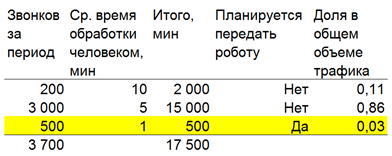
What else do we need to consider? Let’s get back to the layout

It is recommended to calculate with great caution the economic effect of implementing ASR, especially when operating in highly competitive markets. Suppose agents were answering calls quickly before the robot implementation:
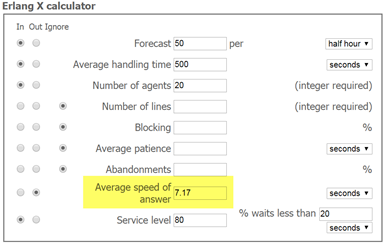
The SIP provider in the technical-economic justification of the project mentioned that it is possible to cut down 6 agents while maintaining the Service Level:

However, the new average response speed may turn out to be higher than the customers’ tolerance threshold, that is, the time they are willing to wait for a human to respond.
Suppose: Clients are willing to wait on average for 15 seconds. It used to be 7.7 seconds. That suited them. Now it’s 26.1 seconds. They are not willing to wait that long. The company risks losing orders or reducing audience loyalty. On paper, there’s optimization, but in fact, it’s illusory or even harmful. All six agents can’t be cut, so you need to approach the assessment of the ASR implementation effect carefully.
By the way, if you add to the initial introduction the presence of 8-800 traffic, then with an increase in the average response speed, costs for traffic will also increase. This must be taken into account when calculating the actual savings, because the costs for 8-800 are proportional to the square of the length of the waiting queue. The benefit condition will look something like this:

In reality, the situation is even more complicated, because the “live” scheme looks like this:
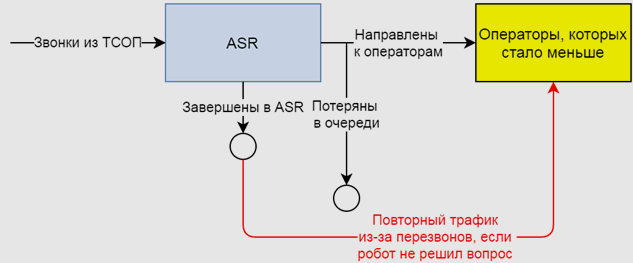
The FCR (First Contact Resolution) of the robot is less than 100%, and some customers will not be immediately redirected to the agents. They’ll call back. Even if the ASR (Automatic Speech Recognition) is smart and will reroute repeat callers directly to agents, this reduces the anticipated economic effect.
Get a technical and economic justification from your SIP provider
When purchasing a bot, it’s important to receive a detailed technical and economic justification from your SIP (Session Initiation Protocol) provider, addressing, at minimum, the following areas:
- Will the cost of processing contacts by the voice bot possibly outweigh the benefits of its implementation, given that calls might become lengthier and why won’t it?
- What portion of client interaction traffic and for what specific client issues is expected to be delegated to the bot?
- If the average speed of response from the agents ‘behind’ the voice robot increases due to workforce reduction, could this lead to customer attrition if their tolerance is low and the ASR market is highly competitive?
- Does the project justification factor in any change to the cost of 8-800 (toll-free) traffic?
- Are repeat calls from customers, who have not had their issue resolved at first contact and need to call back, taken into account? How is the volume of such recurring traffic assessed?
Transparent professional answers to these questions will allow the buyer to make a calculated decision about purchasing a robot to replace call center agents and choose a competent SIP provider with justification.
Dmitry Galkin,
independent consultant on contact center management issues


